5 Routes and Regions for an Authentic Mexican Visit
Article and photos by Ted
Campbell
Published 10/15/2018
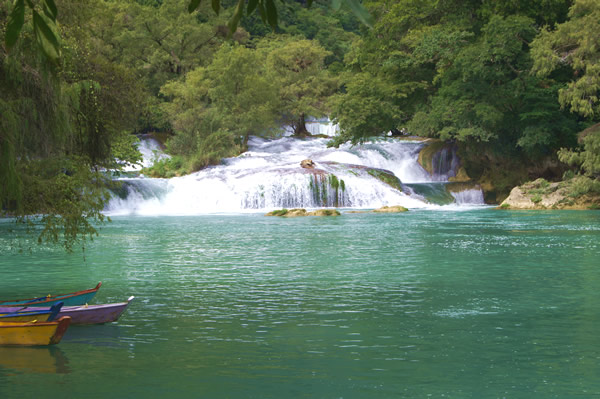 |
| Jungle river full of waterfalls in the Huasteca Potosina region. |
Where can a traveler in Mexico find an authentic experience? Is the real Mexico in a 100-year-old cantina in the historic center of Mexico City, where patrons argue politics and eat pigs-feet tacos?
Is authentic Mexico a small fishing village on the Pacific coast, where barefoot children play soccer in the sand? Or is it a Mayan Catholic church in the highlands of Chiapas, where worshipers kneel on a floor covered in pine needles, lighting candles and drinking Coca-Cola?
The answer is, of course, that it’s in all of these places and many more. Mexico overflows with diversity, and not just the natural diversity of deserts, jungles, and mountains, but also the human diversity of culture and history. In Mexico, having an authentic experience is as easy as stepping out of your hotel and wandering around.
You probably won’t find the genuine Mexico in an all-inclusive resort, however. Sure, you’ll have a wonderful time on the beach and in the pool, and you might get some acceptable tacos in the resort restaurant. But even in the most popular beach towns like Cancun, Acapulco, and Cabo San Lucas, authenticity is waiting just around the corner from the resorts. It might take a little searching, but it’s there.
If you have more time to travel, like a week or two, in other parts of Mexico the authenticity hits you like smoking-hot habanero salsa. And although states like Chiapas and Oaxaca certainly get their share of travelers, in these and other places, the tourist industry is directed to Mexican travelers first.
With that in mind, for an experience that transcends travel and becomes adventure, here are five routes and regions for immersing yourself in authentic Mexico.
Oaxaca
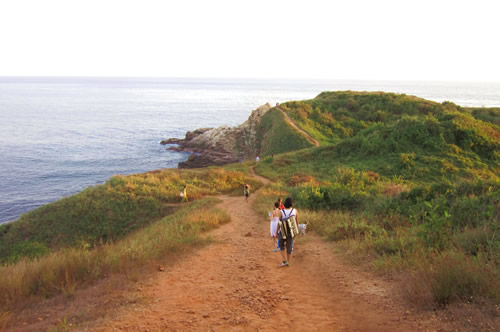 |
| Punta Cometa (Comet Point) next to the Oaxacan beach town Mazunte. |
The large southern state of Oaxaca receives thousands of tourists every year, placing it firmly on the beaten path. But this is a path beaten by independent travelers who love culture.
Pronounced wa-HA-ka, Oaxaca looms large in the minds of Mexican travelers as well, especially for its cuisine, which includes chapulines (fried crickets), tlayudas (crispy tortillas the size of a Frisbee loaded with meat, vegetables and cheese), and all-natural chocolate, which is typically drunk hot or spread on a pastry.
Stringy, white Oaxaca cheese is used on traditional food like quesadillas everywhere in Mexico, though you’ll find the best version in its home state. And you can’t forget Oaxaca’s signature liquor mezcal, which is similar to tequila but distilled from the maguey, a much larger plant than the blue agave used in tequila. Mezcal is having a bit of a hipster renaissance in Mexico, with expensive brands for sale in liquor stores and fancy restaurants countrywide. In Oaxaca, however, you can buy good mezcal in recycled water bottles for only a dollar or two.
A typical trip to the state involves visits to the low-key beaches on the Pacific Ocean: Puerto Escondido, famous for surfing; Huatulco, with its seven secluded bays; and the hippy hangouts of Mazunte and Zipolite, where you can choose between budget accommodation in wooden beach-side bungalows or pricey wellness resorts with spas, yoga, and all-natural cooking.
Separated from the beaches by pine-covered mountains crossed by twisty highways is tranquil Oaxaca City, which is home to world-class restaurants, up-and-coming bars, and labyrinthine traditional markets, offering the traveler many opportunities to enjoy the unique cuisine and ambiance of Oaxaca.
Chiapas
Although southern neighbors Oaxaca and Chiapas both have an abundance of natural beauty and indigenous culture, Chiapas also has steaming jungles and extensive Mayan ruins. This is Mexico’s southernmost state, bordering Guatemala, and with its large Mayan population, it often feels like a different country from the rest of Mexico.
The state’s two highlights are colonial San Cristobal de las Casas and the ancient Mayan city of Palenque about five hours away. San Cristobal is in a broad valley of the cool, mountainous central highlands, while Palenque is in the hot jungle lowlands. A trip to both shows you several sides of this unique corner of Mexico. San Cristobal has cobblestone streets and colonial architecture, a vibrant art and music scene, and a strong indigenous influence, while Palenque is one of the best places in Mexico to appreciate the ancient achievements of the Mayan civilization, which disappeared more than a thousand years ago.
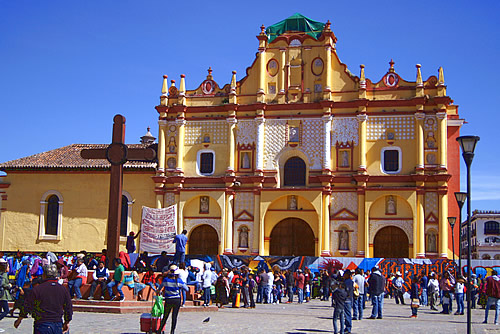 |
| San Cristóbal Cathedral in central San Cristóbal de las Casas, Chiapas. |
Sure, there are hundreds of Mayan sites in Mexico, but Palenque is a favorite with travelers because you can climb on most of the structures. Plus, it’s surrounded by dense jungle full of streams, troops of monkeys, and colorful tropical birds.
There’s more to see in Chiapas than these two places, such as the multicolored lakes at Montebello, the tall waterfall El Chiflón, and a long, barely-developed Pacific coast of quiet beach towns like Boca de Cielo, where you can easily find accommodation on the ocean for less than US$10 a night.
Huasteca Potosina
Lush jungle isn’t only found in southern Mexico, but in the north as well. As you drive through the desert in the north-central state of San Luis Potosi, going east, you’ll eventually reach a ridge of tall, dry mountains covered in cacti and Joshua trees. Pass over the ridge, and you’ll enter a wide expanse of green on the other side.
This long stretch of the Sierra Madre Oriental mountain range catches moisture coming from the Gulf of Mexico, which rains down on a thick expanse of vegetation crisscrossed by turquoise streams and waterfalls. Guides can take you swimming down many of them, and when you reach a waterfall, you’ll jump off. The largest waterfall is Tamul, but there are many other places to take these waterfall tours, including Los Micos, Minas Viejas, and Tamasopo.
Another iconic destination is the Sotano de las Golondrinas (the Cave of Swallows), a huge hole in the ground where thousands of swallows fly out in spirals every morning and return later in the afternoon. Next to the sleepy small town Aquismón, it’s the second deepest pit in Mexico and one of the longest known caves in the world.
But wait, there’s more. One of the most fascinating places in the Huasteca Potosina is a surrealist garden in the jungle built by eccentric Englishman Edward James, a poet and patron of the arts who was friends with Salvador Dalí, among others. Over 35 years he slowly constructed the strange concrete structures, statues, and buildings at a Las Pozas, a large site at the foot of mountains. Still unfinished and abandoned after James’s death in 1984, it was bought by a private foundation in 2007 and subsequently opened for tourists.
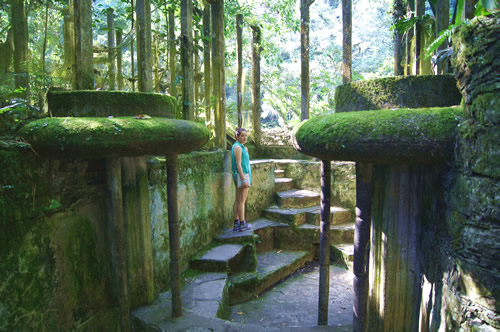 |
| Las Pozas, Edward James’s surrealistic garden in the Huasteca Potosina region. |
Visiting it is a similar experience to visiting Mayan Ruins — mysterious structures in the rainforest, some of which you can climb on, that you explore on winding paths of rock and soil. Naturally, Las Pozas also contains a stream with a waterfall where you can swim. And just up the road is Xilitla, another friendly, scenic small town well worth an afternoon of looking around.
Guadalajara and the Tequila Train
We’ve all heard of tequila the drink, but did you know that it comes from Tequila the town? In the dry, agave-covered hills of the western state of Jalisco, this small town is surrounded by the haciendas of the major tequila distilleries in Mexico, such as Jose Cuervo, Quinta Sauza, and La Herradura.
Sure, you can just show up in Tequila for your tequila tour, but the best way to enjoy this unique experience is to take the one of the two Tequila trains from Guadalajara. The Jose Cuervo Express is the fancier option, which also gives you some time in the town, while the Tequila Express goes straight to the Herradura distillery, where the Herradura, El Jimador, and Tres Generaciones brands are produced, among others. For both, you board the train in the morning, and the tequila starts flowing right away — as much as you want, all day long.
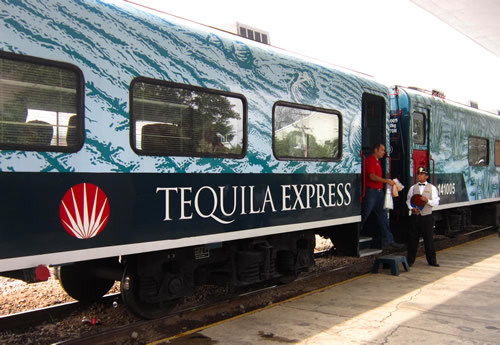 |
| Tequila Express train ready to depart from Guadalajara, Jalisco. |
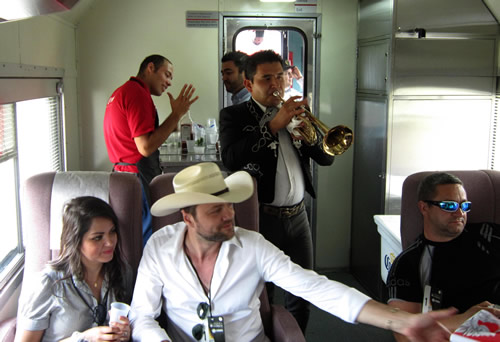 |
| Mariachis inside the train. |
The trains leave from Guadalajara, which is a wonderful destination in its own right. This important, medium-sized city is the source of many cultural manifestations that are symbolic of Mexico: sharply dressed mariachi musicians; Las Chivas, Mexico’s most popular soccer team; and of course tequila. Jalisco is the origin of several dishes that are popular throughout Mexico as well: birria, seasoned pork or goat served in stew or tacos, and tortas ahogadas, a pork sandwich drenched in spicy red sauce.
Mexico City
Don’t dismiss Mexico City just because it’s a tremendously confusing mega-city. Despite being one of the world’s largest urban areas, much of it is generally safe and easy to navigate on foot or the metro. It has a nearly inexhaustible supply of world-class museums, restaurants, and nightlife, along with unique tourist destinations. As the center of Mexico not only geographically and politically, but also culturally, it’s a great place to sample everything that’s authentic about Mexico in all its diversity.
The historic center of Mexico City is the first stop for most travelers, and for good reason. Here you’ll find the largest zócalo (central square) in Latin America, which is bordered by the National Palace and other large buildings constructed during the Spanish colonial period. On the northern side of the zócalo is the Metropolitan Cathedral, which was built on top of the sacred pyramids of the Pre-Hispanic city of Tenochitlan. In fact, right next door to the cathedral is the ongoing excavation of Templo Major, the most important temple for the Aztecs.
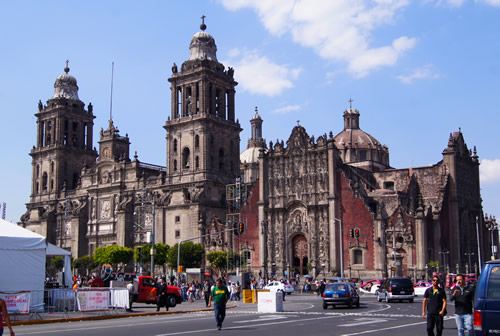 |
| Mexico City Cathedral. |
But besides the area immediately surrounding the zócalo, all 668 blocks of Mexico City’s historic center contain classic buildings like baroque churches, glamorous old-style hotels, marble casinos, spacious former mansions, and — my favorite — cozy cantinas, where you can drink draft beer, eat tacos, and watch soccer with the locals.
Immediately to the west of the historic center is the wide, tree-lined Reforma Avenue, famous for the traffic circle containing the tall column with the Angel of Independence on top. To the south of Reforma are the hip neighborhoods Roma and Condesa, full of bars, restaurants, and leafy plazas. Reforma then passes enormous Chapultepec Park, which has a zoo, the Modern Art and Anthropology museums, and the Chapultepec Castle up on a hill, which is now also a museum.
In the other direction from the historic center you can have a much different experience in La Merced market, which spills out of hanger-like buildings and occupies numerous city streets. You could spend an entire afternoon roaming the narrow alleys and hidden corners of La Merced, which is by far the biggest market in Mexico.
Outside of Mexico City’s downtown core are plenty of other impressive places, such as the Plaza de las Tres Culturas (Square of Three Cultures), which has excavated pyramids, a colonial-era church, and modern apartment buildings all on the same block. There’s a dark side to this destination too, as it was the site of the 1968 massacre of students who were demonstrating against the government. On a quick visit, you wouldn’t even know it but for an unimposing plaque at the site.
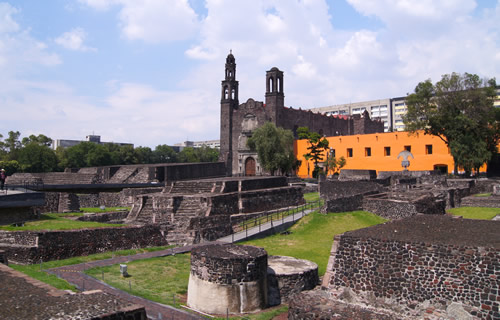 |
| Revealing and excavating the most ancient of the three cultures in Mexico City. |
Farther away is the pretty neighborhood Coyoacan, which has the former homes of Frida Kahlo and Leon Trotsky (both now museums); the upscale neighborhood Polanco and its highlight, the architectural masterpiece of the Soumaya Museum, which houses Carlos Slim’s private art collection with many Rodin sculptures; and Xochimilco, where you can bring a case of beer aboard a small boat and hire some mariachis to keep you entertained as you drift through ancient floating gardens.
All these places and many more make Mexico City an excellent introduction to Mexico, either for a few days before the beach or even a week or two. And if you have more time, there are many options for day trips from the city, like to the largest excavated pyramids in the Western Hemisphere at Teotihuacán, the picturesque mountain town of Taxco, or the nearby cities of Puebla, Cuernavaca, and Querétaro.
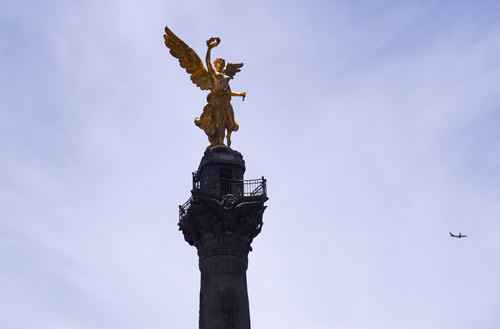 |
| The Angel of Independence, El Ángel, holding a laurel symbolizing victory and a broken chain symbolizing freedom. |
As you can see, there’s a lot more in Mexico besides the beach resorts. You can choose from a massive metropolis or a quiet small town, Mayan ruins or a surrealistic garden, a tequila tour or an afternoon in a public market. Whatever you choose, you’re bound to have an authentic experience, and when you return, you can plan something completely different and equally unforgettable.
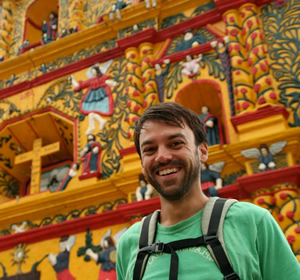 |
Ted Campbell is a freelance writer, Spanish-English translator, and university teacher living in Mexico.
He has written two guidebooks (ebooks) about Mexico, one for Cancun and the Mayan Riviera and another for San Cristobal de las Casas and Palenque in Chiapas, both also available at Amazon.com or on his website.
For stories of adventure, culture, music, food, and mountain biking, check out his blog No Hay Bronca.
To read his many articles written for TransitionsAbroad.com, see Ted Campbell's bio page.
|
|
